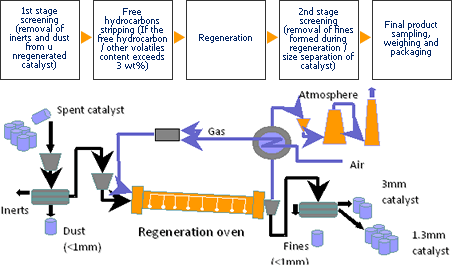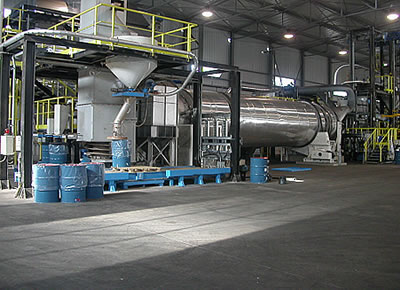Regeneration is a combustion of the coke on the catalyst under controlled conditions, which also transforms the metal (Mo, Co, Ni, W) sulfides back to oxides. Regeneration can cure the 1st and 2nd of the above causes of deactivation. It cannot undo any metals contamination.
ECO-RIGEN operates under license from EURECAT group, the leading group of companies in ex situ catalyst regeneration. Our success is due to the quality of our different regeneration processes, which guarantee an optimal activity recovery of each catalyst type. Our treatments are developed by the EURECAT's R&D staff in cooperation with catalyst manufacturers. Thanks to our own efforts and to the EURECAT know-how and research facilities, we can offer you the best technical support concerning catalyst regeneration.
Our regeneration processes have been qualified by all major refining companies, catalyst manufacturers and licensors. ECORIGEN is ISO 9001 (v2000) and ISO 14001 certified.
The key element to ECO-RIGEN's regeneration quality is the roto-louvre oven. Due to the slow, continuous rotation, local temperature differences are minimized and the contact between catalyst and air is optimized. This process results in a very homogeneous and thorough regeneration while causing very little catalyst attrition while reducing catalyst breakage to an absolute minimum of <1% (guaranteed).
To start the combustion of sulfur and carbon, hot air is passed through the bed of catalyst. No direct flame is ever in contact with the catalyst in order to preserve its surface area and mechanical strength.
The volume of air used to regenerate the catalyst is such that the heat generated by combustion is immediately evacuated, avoiding the appearance of hot spots in the catalyst bed. The air flow is also used to evacuate the SO2 and water formed, avoiding a sufidation of the alumina and decreasing the risk of metal sintering.
Catalyst temperature is monitored continuously throughout the regeneration thanks to thermocouples located directly in the catalyst bed.
The industrial regeneration process is composed of the following steps:

